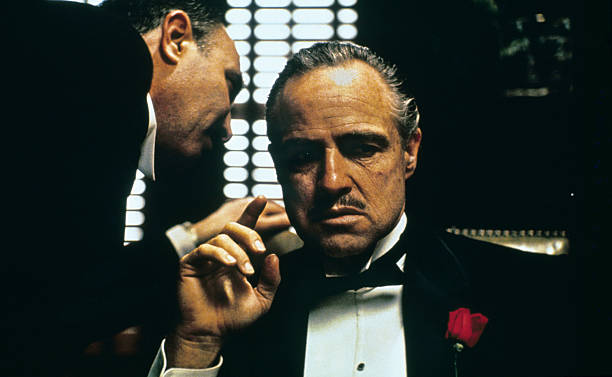The Godfather, a cinematic masterpiece that has captivated audiences for decades, is more than just a film about the criminal underworld. It is a storytelling marvel that offers invaluable lessons for aspiring filmmakers and writers. In this blog, we’ll explore the key elements that make The Godfather movie a timeless classic and how you can apply these techniques to enhance your storytelling prowess.
Buy Airtel Wi-Fi with exciting benefits!
Humanizing the Villains: Crafting Relatable Characters
One of the most striking aspects of The Godfather is its ability to humanize the criminals at the heart of the story. Despite their involvement in illegal activities, the Corleone family is portrayed with depth and complexity. By delving into the intricate relationships within the family, particularly the bond between Vito Corleone and his sons, the film adds layers to their criminal actions, making them relatable and engaging.
When crafting your characters, take a cue from The Godfather and focus on their human qualities. Give them strengths, weaknesses, and motivations beyond their criminal pursuits. By doing so, you’ll create characters that resonate with your audience, even if they don’t condone their actions.
The Power of Setting: Transporting Your Audience
The Godfather masterfully utilizes its settings to enrich the narrative. While primarily set in the bustling streets of New York City, scenes in Italy add cultural depth and expand the film’s universe. This approach highlights the importance of using settings to enhance storytelling and create a more immersive experience for the audience.
Consider how the setting can contribute to the overall narrative when crafting your own stories. Use it to provide context, evoke emotions, and transport your audience to different times and places. By carefully selecting and describing your settings, you can create a rich and captivating world for your characters.
The Influence of External Factors: Adapting to Change
The movie addresses how historical events, such as the changing criminal landscape following World War II, affect the characters. The introduction of narcotics as a new money source creates tension among the families and drives the plot forward. This theme emphasizes how external factors, such as social and historical changes, can impact your characters and story.
When developing your narratives, consider the broader context in which your characters exist. How do external events shape their decisions and actions? By incorporating these elements, you can create a more dynamic and realistic story that reflects the complexities of the world around us.
The Art of Subtlety: Conveying Power Through Restraint
One of the most iconic scenes in The Godfather is the infamous horse head scene, which demonstrates the impact of subtle yet effective displays of power. Rather than relying on gratuitous violence, the film conveys the brutality of the characters through restrained actions that speak volumes.
When crafting your villains or powerful characters, consider the art of subtlety. Sometimes, less is more when it comes to showing strength and influence. By using restraint and carefully chosen actions, you can create menacing and memorable characters.
Mastering Dialogue: Crafting Memorable Lines
The Godfather movie is renowned for its memorable dialogue, with lines like “I’m gonna make him an offer he can’t refuse” and “Just when I thought I was out, they pull me back in,” becoming part of popular culture. These lines not only contribute to the film’s iconic status but also serve to reveal character motivations and power dynamics.
When writing your dialogue, aim for memorable and purposeful lines. Use dialogue to reveal character traits, advance the plot, and create subtext. By crafting sharp, witty, and meaningful dialogue, you can elevate your storytelling to new heights.
|
Did You Know? The Godfather was the highest-grossing film of 1972, earning between $250 and $291 million at the box office. Its success paved the way for two sequels and cemented its place in cinematic history. |
Conclusion: Embracing the Lessons of The Godfather
The Godfather is a treasure trove of storytelling lessons that continue to inspire and influence filmmakers and writers today. By humanizing criminals, utilizing the setting, adapting to change, embracing subtlety, and mastering dialogue, the film creates a rich, captivating narrative that stands the test of time. If you’re feeling inspired, you can stream The Godfather movie online and explore a world of movies and series on Airtel Xstream Play—all with the reliable speed of Airtel Internet.
As you embark on your storytelling journey, remember these lessons from The Godfather movie. Whether you’re writing a script, a novel, or even a blog post, these techniques can help you craft stories that engage, entertain, and leave a lasting impact on your audience. Upgrade your internet plan to Airtel Broadband to watch several latest and classic movies and web series.
FAQs
What makes “The Godfather” such an iconic and influential movie?
The Godfather movie is a cinematic masterpiece known for its gripping storyline, stellar performances, and profound exploration of family, power, and loyalty.
Is The Godfather a Hollywood or Bollywood movie?
The Godfather movie is a classic Hollywood crime drama, not a Bollywood film. It was directed by Francis Ford Coppola and released in 1972.
Is “The Godfather” movie based on a true story?
While inspired by real-life mafia figures, The Godfather movie is a work of fiction based on Mario Puzo’s novel of the same name.
Who are the main actors in The Godfather movie cast?
The Godfather movie cast includes Marlon Brando as Vito Corleone, Al Pacino as Michael Corleone, James Caan as Sonny Corleone, and Diane Keaton as Kay Adams.
What makes The Godfather considered one of the greatest films ever made?
The Godfather is hailed for its masterful storytelling, iconic performances, profound themes of family, power, and corruption, and its immense influence on the gangster genre.


 Get App
Get App  Airtel Store
Airtel Store  Login
Login 


